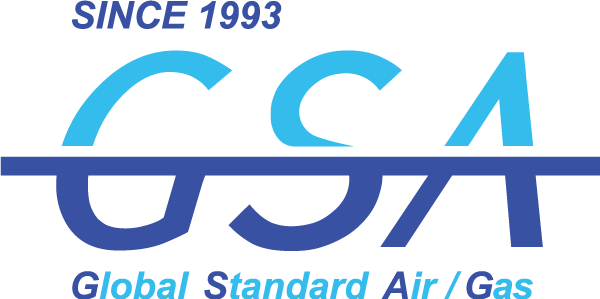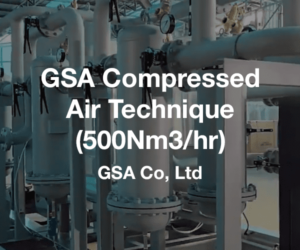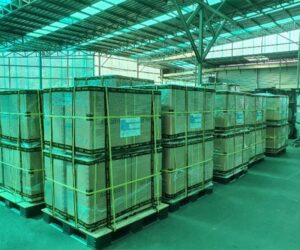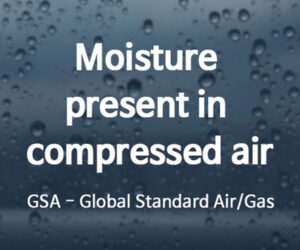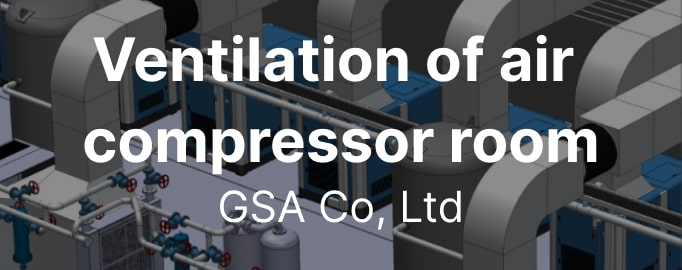
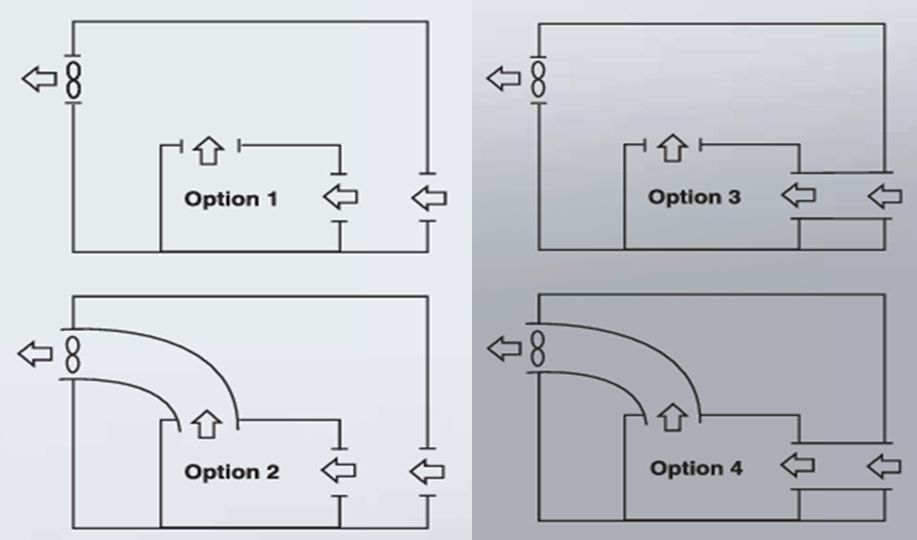
Heat in the compressor room is generated from all compressors. This heat is let off by ventilating the compressor room. The quantity of ventilation air is determined by the size of the compressor and whether it is air- or water-cooled.
The ventilation air for air-cooled compressors contains close to 100% of the energy consumed by the electric motor in the form of heat.
The ventilation air for water-cooled compressors contains some 10% of the energy consumed by the electric motor. The heat must be removed to maintain the temperature in the compressor room at an acceptable level.
The ventilation air for air-cooled compressors contains close to 100% of the energy consumed by the electric motor in the form of heat.
The ventilation air for water-cooled compressors contains some 10% of the energy consumed by the electric motor. The heat must be removed to maintain the temperature in the compressor room at an acceptable level.
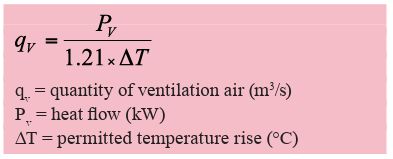
The compressor manufacturer should provide detailed information regarding the required ventilation flow, but this figure can also be calculated according to this formation :
A better way to deal with the heat build-up problem is to recover the waste heat energy and use it on the premises.
Ventilation air should be taken from outdoors, preferably without using long ducting.
Further more, the intake should be placed as low as possible, but without running the risk of being covered with snow during the winter.
A better way to deal with the heat build-up problem is to recover the waste heat energy and use it on the premises.
Ventilation air should be taken from outdoors, preferably without using long ducting.
Further more, the intake should be placed as low as possible, but without running the risk of being covered with snow during the winter.
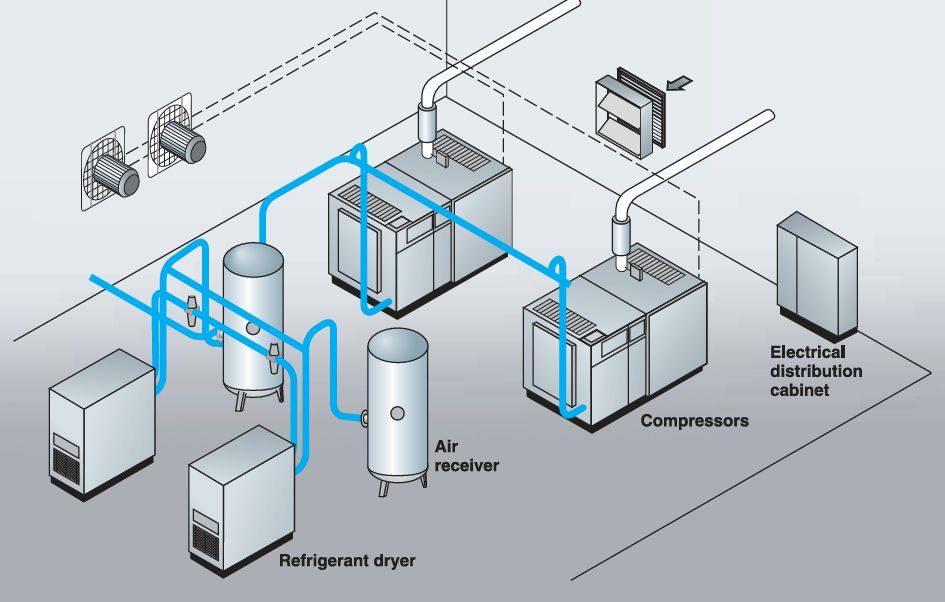
Example of a hospital installation with closed supply on the suction side and 100% redundant system.
Even risks that dust and explosive or corrosive substances might potentially enter the compressor room must be taken into consideration.
The ventilation fan/fans should be placed high up on one of the compressor room’s end walls, and the air intake placed on the opposite wall. The air velocity at the ventilation inlet opening should not exceed 4 m/s.
Thermostat-controlled fans are the most appropriate in this case. These fans must be dimensioned to handle the pressure drop in the ducting, outer wall louver, etc.
The quantity of ventilation air must be sufficient to limit the temperature increase in the room to 7–10°C. The possibility of using water cooled compressors should be considered if there is a problem procuring sufficient ventilation in the room.
The ventilation fan/fans should be placed high up on one of the compressor room’s end walls, and the air intake placed on the opposite wall. The air velocity at the ventilation inlet opening should not exceed 4 m/s.
Thermostat-controlled fans are the most appropriate in this case. These fans must be dimensioned to handle the pressure drop in the ducting, outer wall louver, etc.
The quantity of ventilation air must be sufficient to limit the temperature increase in the room to 7–10°C. The possibility of using water cooled compressors should be considered if there is a problem procuring sufficient ventilation in the room.
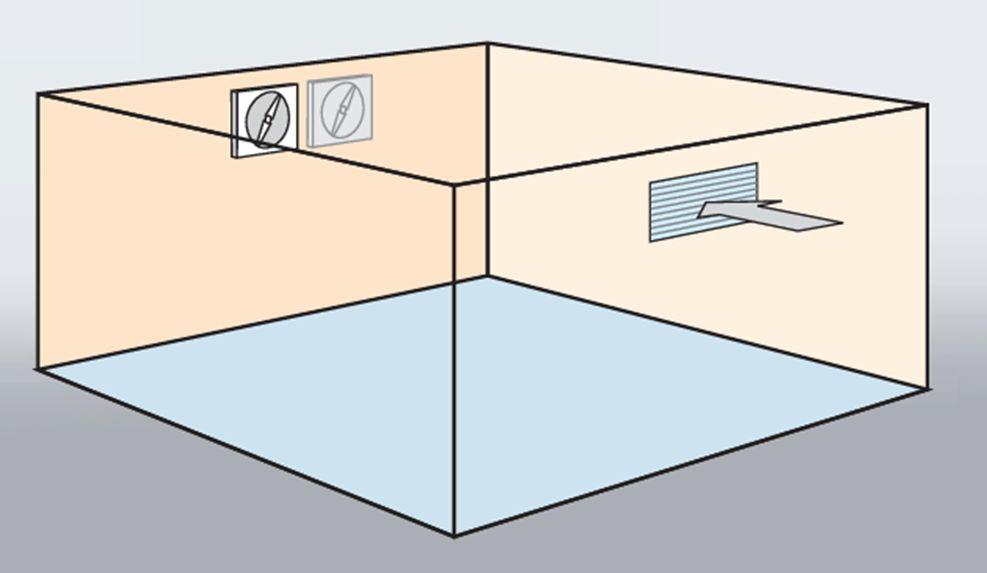
The disadvantage of the basing ventilation solution is that ventilation is constant irrespective of the outside temperature.
In addition. difficulties can occur if two compressors are installed. The fans will be over-dimentioned if only one of the compressors is used.
The problem can be solved by fitting the fans with speed controlled motors, which start via a multi-stage thermostat
In addition. difficulties can occur if two compressors are installed. The fans will be over-dimentioned if only one of the compressors is used.
The problem can be solved by fitting the fans with speed controlled motors, which start via a multi-stage thermostat
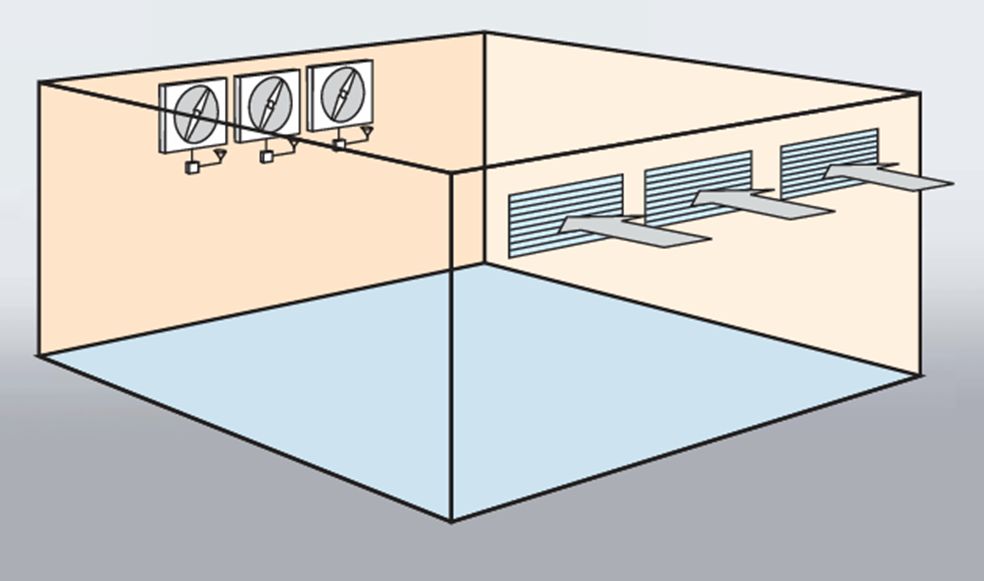
System with several thermostat-controlled fans, which together can handle the total ventilation requirement.
The thermostats on the individual fans are set for different ranges, which means that the quantity of ventilation air can vary depending on the outside temperature and/ or the number of compressors in use (as the thermostats will switch on the fans one after another depending on the temperature in the compressor room).
Alternatively, the fans can be started via a multi-stage thermostat.
The thermostats on the individual fans are set for different ranges, which means that the quantity of ventilation air can vary depending on the outside temperature and/ or the number of compressors in use (as the thermostats will switch on the fans one after another depending on the temperature in the compressor room).
Alternatively, the fans can be started via a multi-stage thermostat.
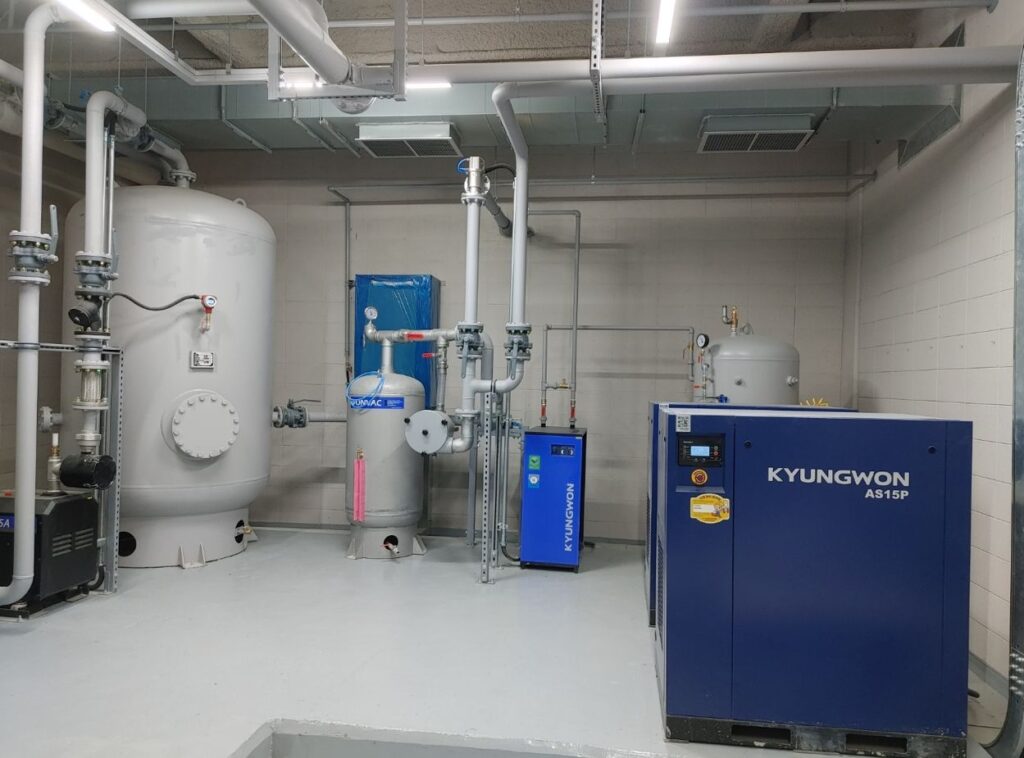
The main rule for an installation is first and fore most to arrange a separate compressor central plant.
Experience dictates that centralization is preferable, regardless of industry.
Among other things, it provides improved operating economy, a better-designed compressed air system, service and user friendliness, protection against unauthorized access, proper noise control and simpler possibilities for controlled ventilation.
Experience dictates that centralization is preferable, regardless of industry.
Among other things, it provides improved operating economy, a better-designed compressed air system, service and user friendliness, protection against unauthorized access, proper noise control and simpler possibilities for controlled ventilation.
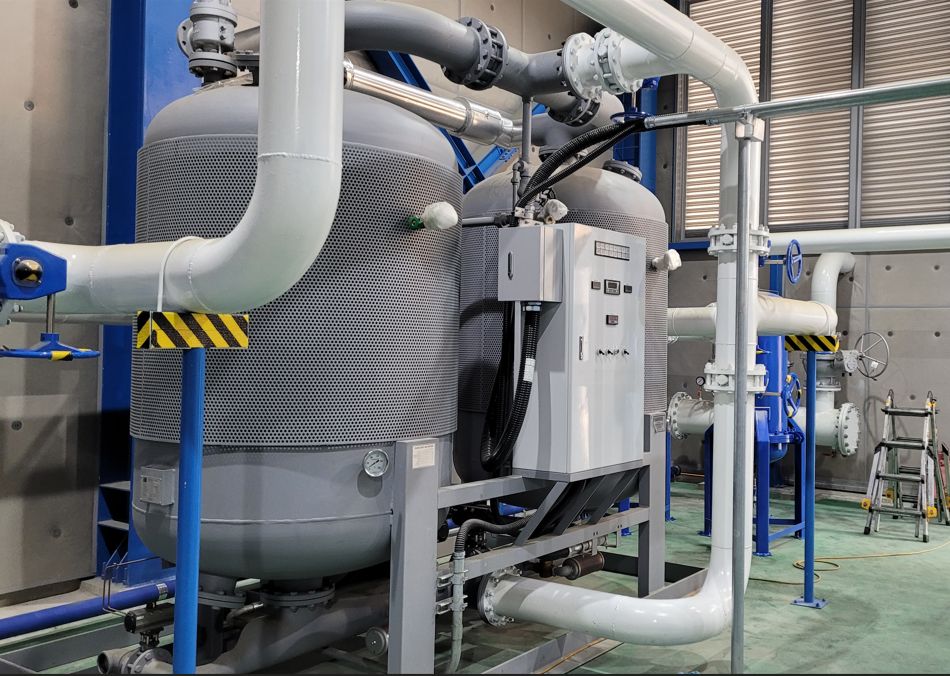
Secondly, a separate area in a building that is used for other purposes can be used for the compressor installation.
Certain risks and inconveniences should be accounted for with this type of installation, for example:
Certain risks and inconveniences should be accounted for with this type of installation, for example:
- disturbance due to noise or the compressor’s ventilation requirements,
- physical risks
- overheating risks,
- drainage for condensation,
- hazardous surroundings
- dust or inflammable substances,
- aggressive substances in the air,
- space requirements for future expansion
- accessibility for service.
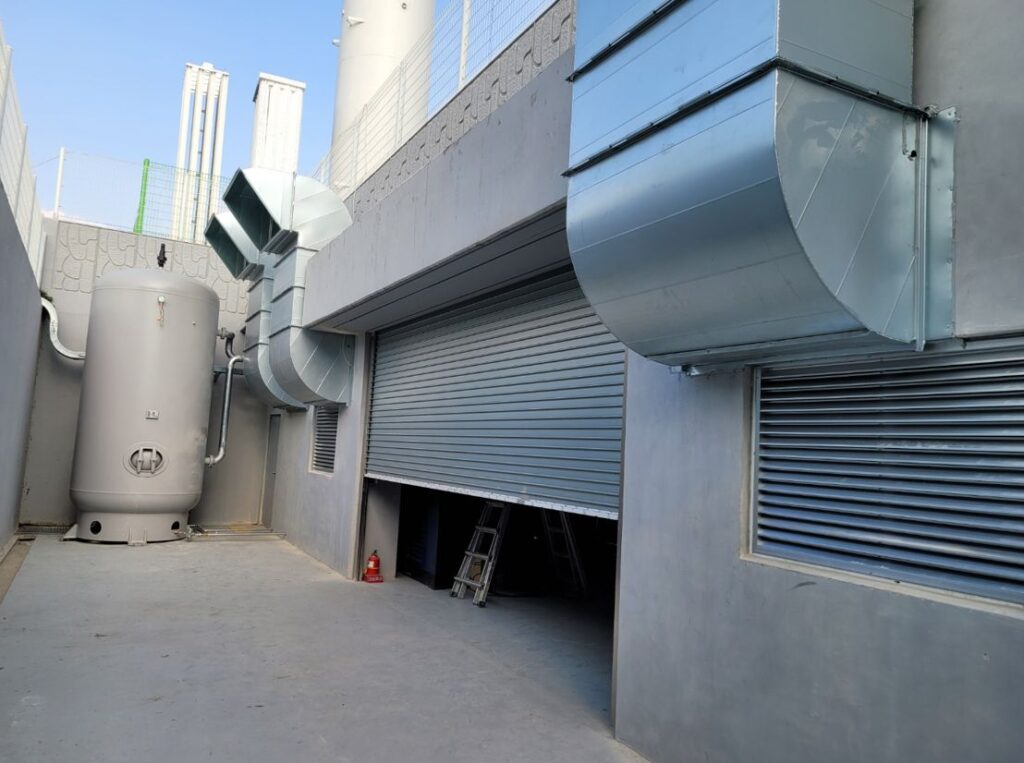
However, installation in a workshop or warehouse can facilitate the installations for energy recovery. If there are no facilities available for installing the compressor indoors, it may also be installed outdoors, under a roof.
In this case, certain issues must be taken into consideration:
In this case, certain issues must be taken into consideration:
- the risk of freezing for condensation pockets and discharges,
- rain and snow protection for the air intake opening,
- suction inlet and ventilation,
- required solid, flat foundation (asphalt, concrete slab or a flattened bed of shingle),
- the risk of dust,
- inflammable or aggressive substances
- protection against unauthorized access.
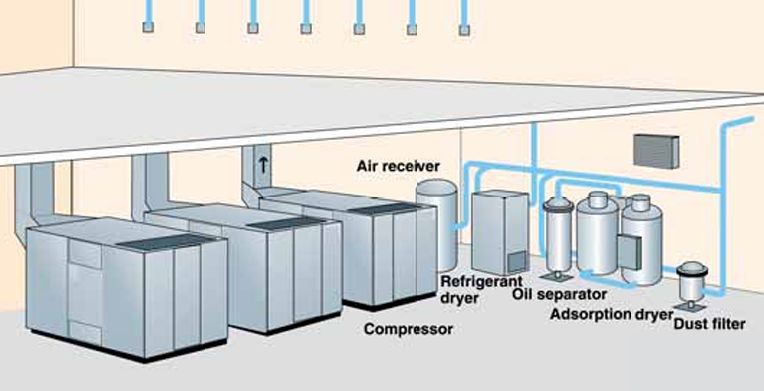
3.5.2 Placement and design
The compressed air plant should be installed to facilitate distribution system routing in large installations with long piping.
Service and maintenance can be facilitated by installing the compressed air plant near auxiliary equipment such as pumps and fans; even a location close to the boiler room may be beneficial.
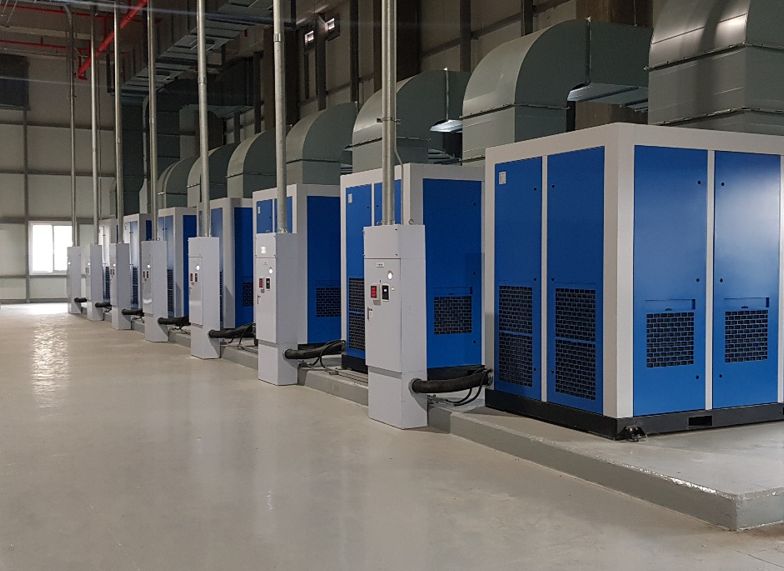
The building should feature lifting equipment that is dimensioned to handle the heaviest components in the compressor installation, (usually the electric motor) and/or have access to a forklift truck.
It should also have sufficient floor space for installation of an extra compressor for future expansion. In addition, clearance height must be sufficient to allow an electric motor or similar to be hoisted, should the need arise.
The compressed air plant should have a floor drain or other facilities to handle condensation from the compressor, after cooler, air receiver, dryers etc. The floor drain must be implemented in compliance with municipal legislation.
It should also have sufficient floor space for installation of an extra compressor for future expansion. In addition, clearance height must be sufficient to allow an electric motor or similar to be hoisted, should the need arise.
The compressed air plant should have a floor drain or other facilities to handle condensation from the compressor, after cooler, air receiver, dryers etc. The floor drain must be implemented in compliance with municipal legislation.
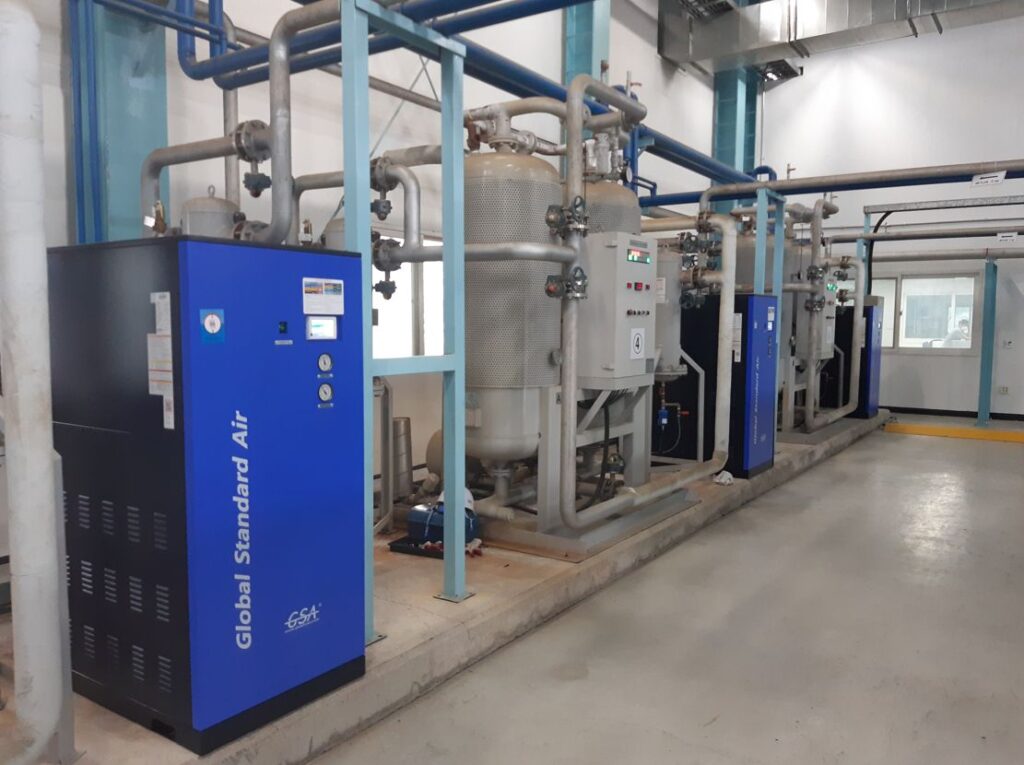
3.5.3 Foundation
Normally only a flat floor of sufficient weight capacity is required to set up the compressor plant. In most cases, anti-vibration features are integrated in the plant.
For new installations, a plinth is usually used for each compressor package in order to allow the floor to be cleaned. Large piston and centrifugal compressors can require a concrete slab foundation, which is anchored to the bedrock or on a solid soil base.
The impact of externally-produced vibration has been reduced to a minimum for advanced, complete compressor plants. In systems with centrifugal compressors, it may be necessary to vibration dampen the compressor room’s foundation
Normally only a flat floor of sufficient weight capacity is required to set up the compressor plant. In most cases, anti-vibration features are integrated in the plant.
For new installations, a plinth is usually used for each compressor package in order to allow the floor to be cleaned. Large piston and centrifugal compressors can require a concrete slab foundation, which is anchored to the bedrock or on a solid soil base.
The impact of externally-produced vibration has been reduced to a minimum for advanced, complete compressor plants. In systems with centrifugal compressors, it may be necessary to vibration dampen the compressor room’s foundation
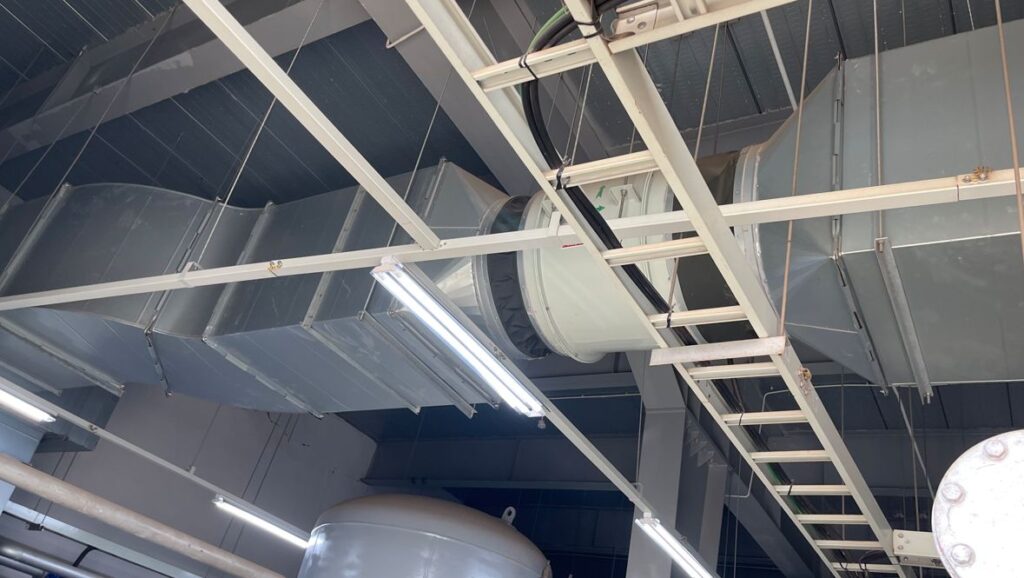
3.5.4 Intake air
The compressor’s intake air must be clean and free of solid and gaseous contamination. Particles of dirt that cause wear and corrosive gases can be particularly damaging.
The compressor air inlet is usually located at an opening in the sound-reducing enclosure, but can also be placed remotely, in a place in which the air is as clean as possible.
Gas contamination from vehicle exhaust fumes can be fatal if mixed with air that is meant to be inhaled. A pre-filter (cyclone, panel or rotary band filter) should be used on installations where the surrounding air has a high dust concentration. In such cases, the pressure drop caused by the pre-filter must be accounted for during design.
The compressor’s intake air must be clean and free of solid and gaseous contamination. Particles of dirt that cause wear and corrosive gases can be particularly damaging.
The compressor air inlet is usually located at an opening in the sound-reducing enclosure, but can also be placed remotely, in a place in which the air is as clean as possible.
Gas contamination from vehicle exhaust fumes can be fatal if mixed with air that is meant to be inhaled. A pre-filter (cyclone, panel or rotary band filter) should be used on installations where the surrounding air has a high dust concentration. In such cases, the pressure drop caused by the pre-filter must be accounted for during design.
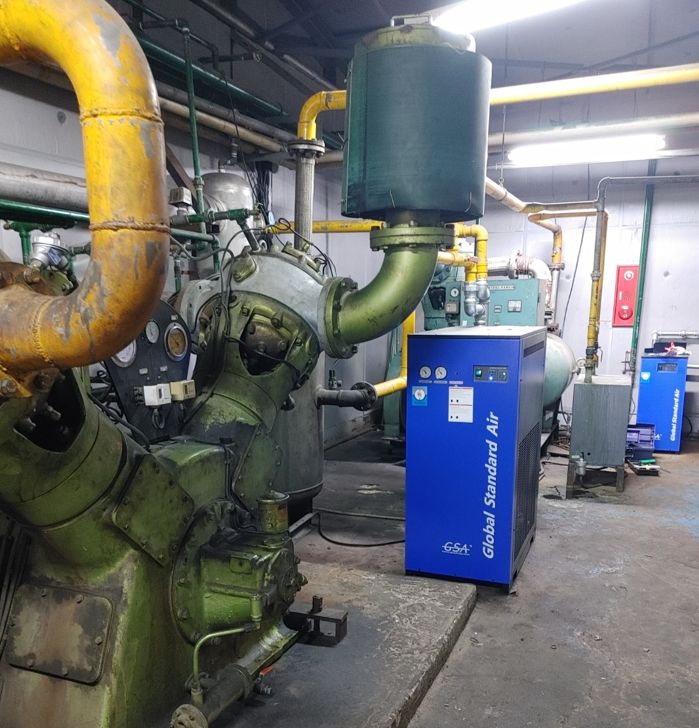
It is also beneficial for the intake air to be cold. It may therefore be appropriate to route this air through a separate pipe from the outside of the building into the compressor.
It is important that corrosion-resistant pipes, fitted with mesh over the inlet and designed so that there is no risk of drawing snow or rain into the compressor, be used for this purpose.
It is also important to use pipes of a sufficiently large diameter to have as low a pressure drop as possible. The design of the inlet pipes on piston compressors is particularly critical.
Pipe resonance from acoustic standing waves caused by the compressor’s cyclic pulsating frequency can damage the piping as well as the compressor, cause vibration and affect the surroundings through irritating low frequency noise.
It is important that corrosion-resistant pipes, fitted with mesh over the inlet and designed so that there is no risk of drawing snow or rain into the compressor, be used for this purpose.
It is also important to use pipes of a sufficiently large diameter to have as low a pressure drop as possible. The design of the inlet pipes on piston compressors is particularly critical.
Pipe resonance from acoustic standing waves caused by the compressor’s cyclic pulsating frequency can damage the piping as well as the compressor, cause vibration and affect the surroundings through irritating low frequency noise.
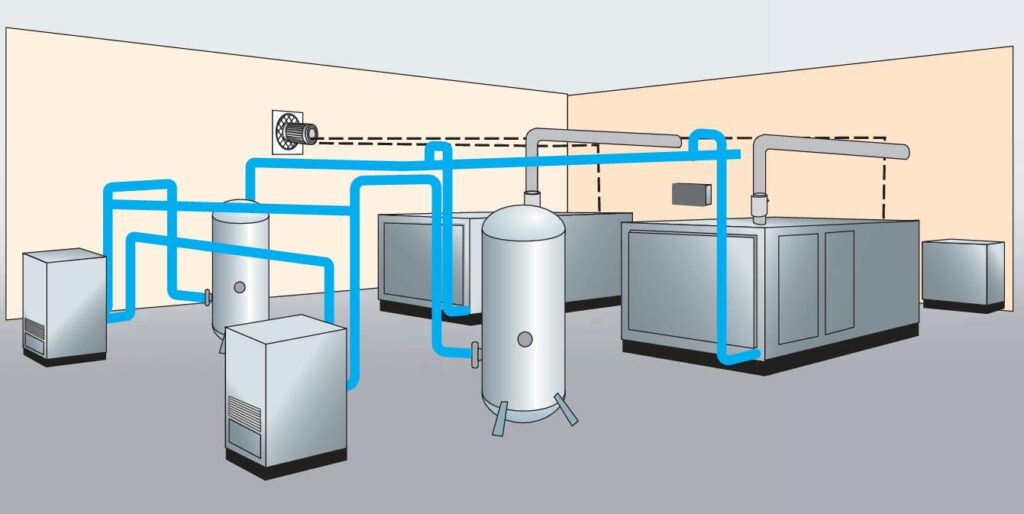
It is important that the compressor installation has a layout that is service friendly and flexible to accommodate future expansion. The minimum area at service points in front of the machine electrical cabinets should be 1200 mm.


